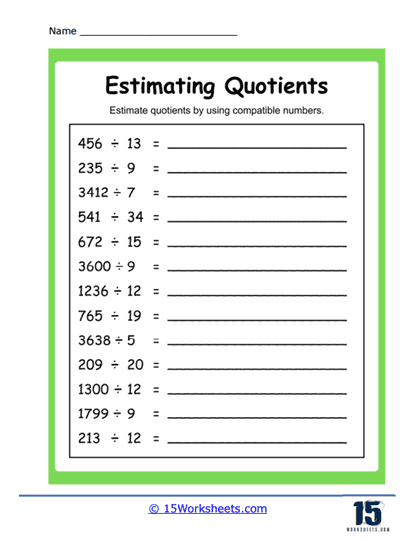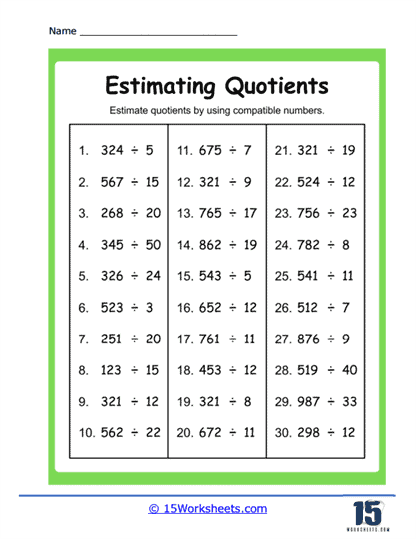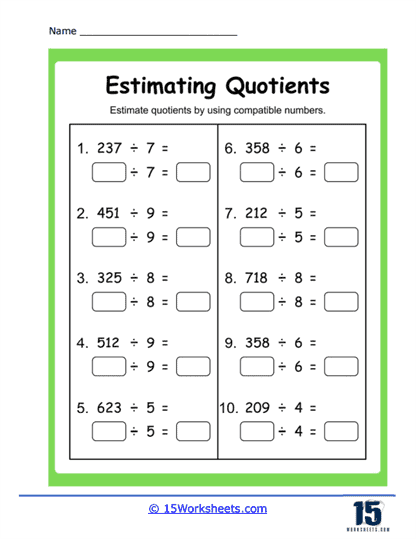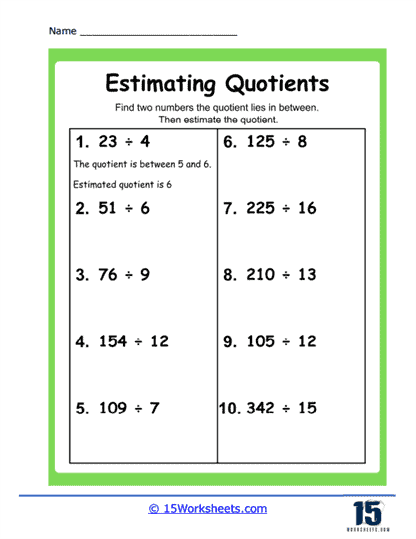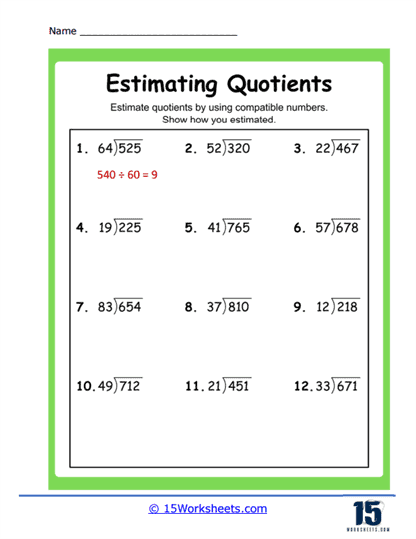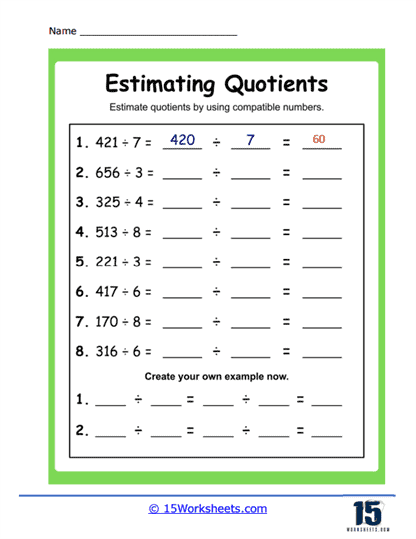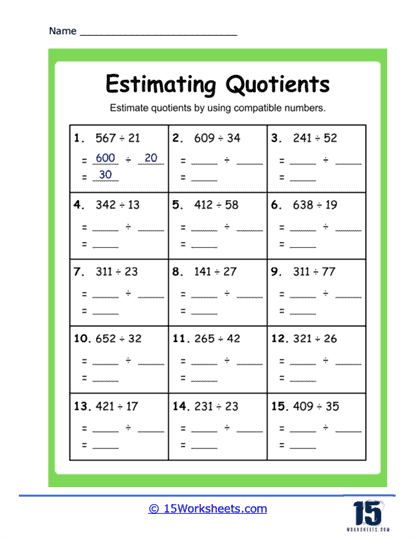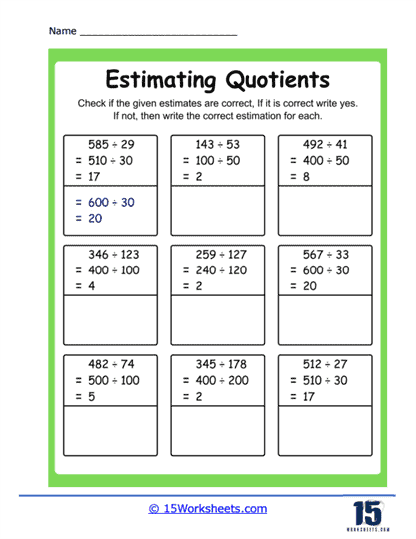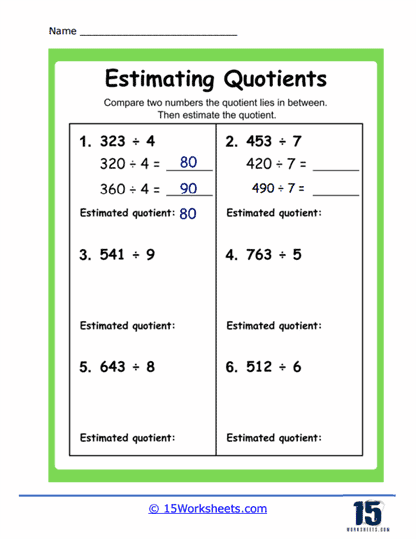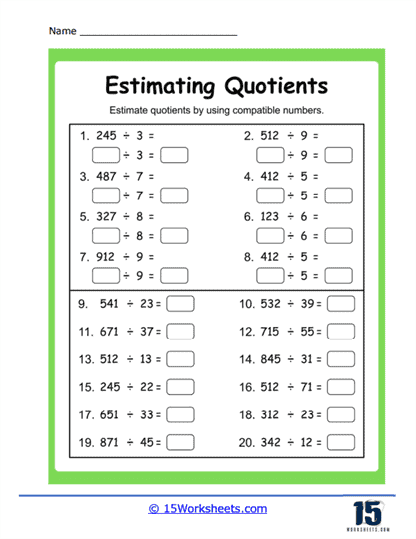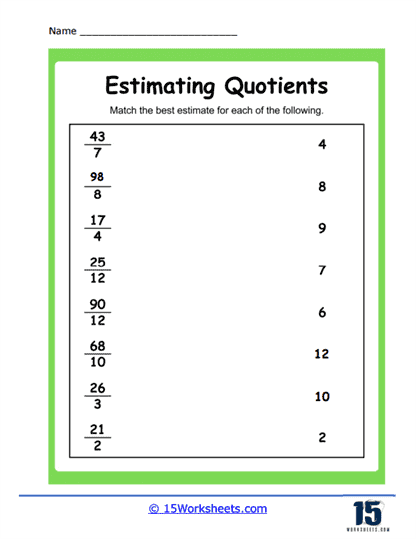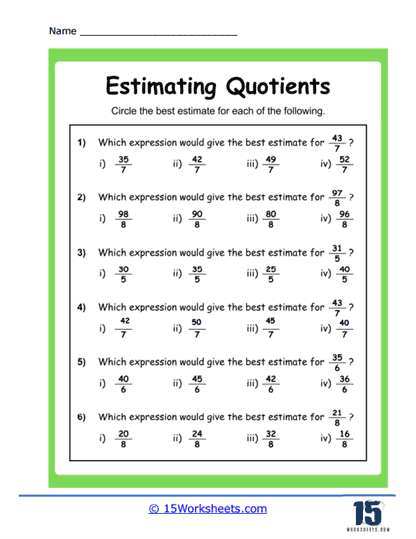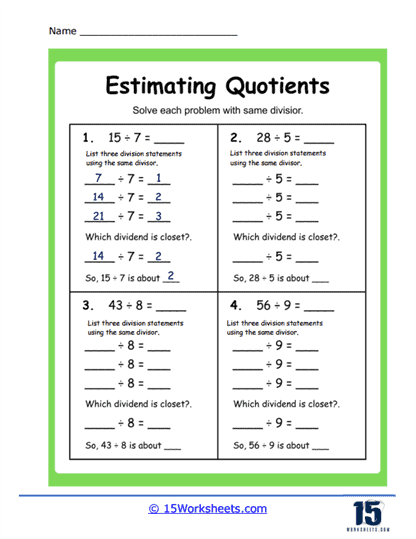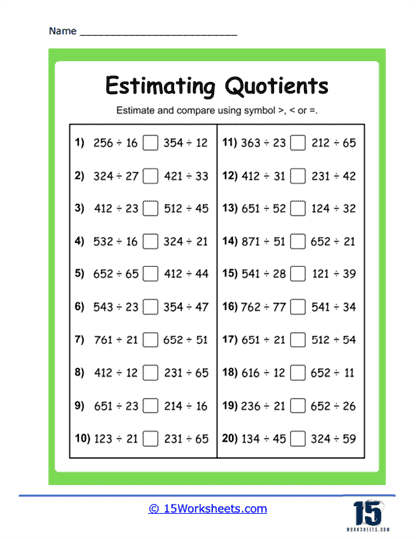Estimating Quotients Worksheets
About These 15 Worksheets
These worksheets typically contain a series of exercises or problems where students are asked to estimate the approximate value of the quotient of two given numbers. Estimating quotients involves making reasonable and informed guesses about the result of a division problem without performing precise calculations. It is a valuable skill that allows students to quickly assess and approximate the outcome of division in real-life situations or when solving problems. Estimation can make complicated division problems simpler and quicker to solve, especially when you’re doing mental math or you don’t need a precise answer.
Now, let’s take a look at the kind of exercises you’ll find in Estimating Quotients Worksheets:
Basic Estimation – In these exercises, you’ll be asked to estimate the quotient (result) of a simple division problem. For example, if the problem is 125 divided by 4, you could round 125 to 120, and then divide by 4 to estimate the quotient as 30.
Large Number Estimation – These problems involve larger numbers. For example, if the problem is 2400 divided by 3, you could round 2400 to 2400 (as it’s already a round number), and then divide by 3 to estimate the quotient as 800.
Multiple Operations – In these exercises, you’ll combine multiple operations. You might be asked to add or subtract numbers first, and then estimate the quotient. For example, you might add 132 and 256, and then estimate the quotient of the result divided by 78.
Decimal Estimation – These problems involve decimals. For example, to estimate the quotient of 4.9 divided by 1.2, you could round 4.9 to 5 and 1.2 to 1, then divide to estimate the quotient as 5.
Fraction Estimation – Here, you’ll be estimating quotients involving fractions. For example, if asked to estimate the quotient of 7/8 divided by 1/4, you could round 7/8 to 1 and 1/4 to 0.5, and then divide to estimate the quotient as 2.
Now, let’s discuss where this skill comes into play in real-life scenarios:
Cooking and Baking – When adjusting the amount of an ingredient in a recipe to serve a different number of people, you’ll often need to divide. For instance, if a recipe for 4 needs 2 cups of milk and you want to make it for 2 people, you could divide 2 cups by 2 to estimate that you’ll need about 1 cup of milk.
Budgeting – If you have a certain amount of money to spend per week, you might need to divide to figure out how much you can spend each day.
Academics – In subjects like physics or chemistry, you often need to divide to solve problems or perform calculations.
Sports – When calculating per-game averages in sports like basketball or soccer, division is frequently used.
The Environment – If you want to understand your water consumption, you might need to divide your total consumption by the number of days to find out approximately how much water you use per day.
These types of worksheets may look challenging at first, but they’re actually a fantastic way to make division problems easier and to develop a good number sense. This is not just another math lesson, it’s a life skill that’ll come in handy in a number of everyday situations. So, tackle those worksheets head-on!


